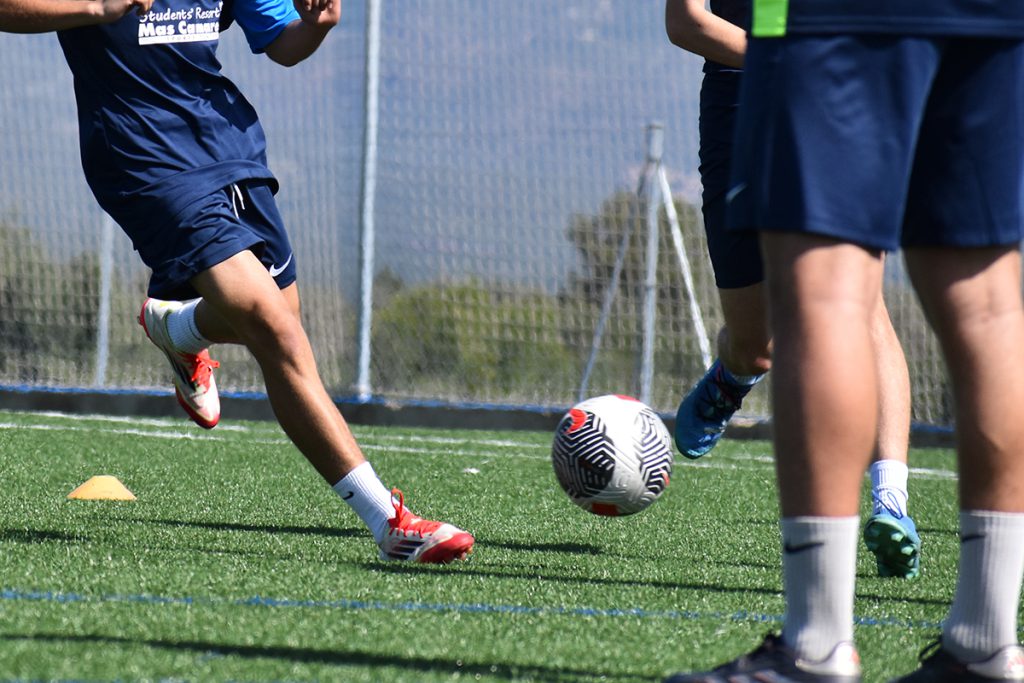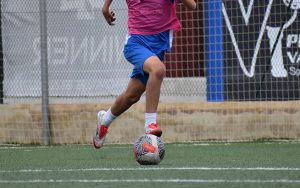Being able to read the game is what separates good players from game-changers. It’s not just about skill on the ball—it’s about anticipation, decision-making, and knowing what’s about to happen before it does. The most impactful players move with purpose, exploit space, and make others around them better—all because they understand tactics on a deeper level.
Tactical intelligence is rarely taught well in youth football, unless you’re in a system designed to develop it deliberately. That’s why many players who attend elite-level soccer camps often take major strides in their game understanding early on.
Let’s explore how you can start learning the game beyond the surface—and make smarter decisions every time you step on the pitch.
Table of Contents
What Does It Mean to Read the Game?
To read the game is to see the bigger picture. It’s about:
🔁 Anticipating movement (yours and others)
👀 Understanding space—where it opens, when to occupy it
🧠 Processing patterns of play quickly
📈 Making proactive decisions instead of reactive ones
It’s the reason players like Busquets, Modrić, or Rodri stand out without flashy skills. They’re always in the right place.
Start with Positioning Awareness
Whether you’re a defender, midfielder, or forward, smart positioning helps you:
✅ Stay one step ahead
✅ Conserve energy by avoiding unnecessary runs
✅ Support your teammates defensively and offensively
Tips to improve positioning:
- Always check your shoulder before receiving
- Know your options before the ball arrives
- Stay connected to your teammates (not too far or too close)
- Adjust your position based on where the ball is and where it’s going
The more you move intelligently, the easier the game becomes.
Watch the Game Differently
Watching football for fun is great—but watching it to learn is what will level up your IQ.
🎯 Pick one player in your position
🔍 Watch how they move off the ball
🧭 Focus on their decisions: when they pass, when they hold, when they press
🗒️ Take notes during or after the match
Every time you study a match, you build a library of real-world situations your brain can recall instantly during your own games.
Practice Scanning and Decision-Making
One of the most overlooked habits in tactical development is scanning the field. It helps you:
🔄 Play faster
🧠 Anticipate threats and opportunities
📊 Reduce mistakes under pressure
Drills to develop scanning:
- Rondo with color calls: players must scan and respond to visual cues
- Cone scanning: call out numbers on cones before receiving a pass
- Mirror movement games: track teammates and opponents while dribbling
Build the habit of scanning every 3–5 seconds. It will change how fast you process information.ç
Understand Team Shape and Roles
Tactics aren’t just formations—they’re fluid systems. Understanding them helps you blend into any style of play.
💡 Learn the roles of players around you
⚙️ Know the difference between a high press vs mid-block
🏃♂️ Study overlaps, underlaps, rotations, and pressing triggers
📐 Understand spacing: how wide or narrow your team should be depending on the ball’s location
The more you know how your team moves as a unit, the better your individual decisions become.
Communication and Leadership
Reading the game means nothing if you can’t communicate it. Be a voice that helps organize, warn, or support teammates.
🗣️ Call out danger
🎯 Direct passes or movement
👂 Listen and respond to others’ cues
Even at youth levels, players who lead vocally stand out to coaches and scouts—not just because they’re loud, but because they understand what’s going on.
Tactical Scenarios to Train the Brain
Use training to simulate match situations. Challenge your brain in context:
📊 3v2 overloads – Decision-making under numerical advantage
🔁 Transition drills – Reacting quickly when possession changes
🧠 Shadow play – Practicing movement without opposition to understand structure
⏱️ Timed possession – Encouraging quicker thinking and smarter spacing
These drills are used in high-level training sessions because they mimic real-game decisions, not just physical actions.
Bonus: Tactical Journaling
After matches or training, take 5–10 minutes to write down:
- One tactical decision you made well
- One moment you were caught out of position
- What you could have done differently
This self-reflection creates deeper awareness and sharpens your instincts over time.
See What Others Don’t
The ability to read the game turns you from a player who chases the ball into one who controls the game’s flow. Whether you’re a striker making timed runs, a defender intercepting through balls, or a midfielder switching play, your mind is the difference-maker.
It’s not about being the fastest or most technical—it’s about being the smartest player on the pitch. And if you’re ready to train your brain like your body, a development environment with a strong focus on tactical intelligence—like some of the top soccer camps in Spain—can give you the structure, coaching, and challenges to reach that next level.
See faster. Think quicker. Play smarter. ⚽🧠📈




